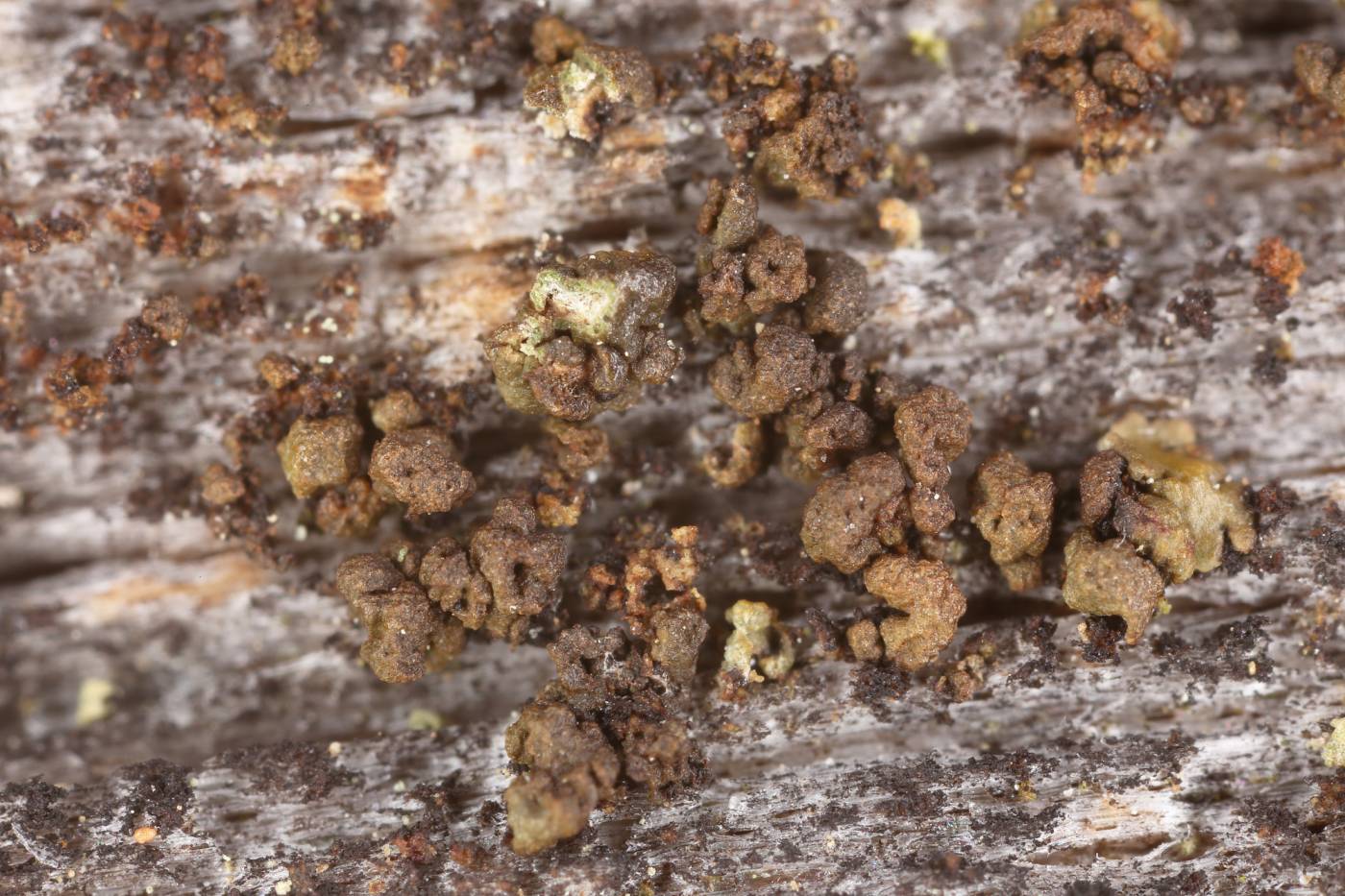The squamules of Xylopsora caradocensis are mat, round to slightly deformed, grey-green, grey-brown or brown-green and contain metabolites similar to friesiic acid (UV+ white). Black apothecia are commonly present. It might be difficult to distinguish from rarer X. friesii, which has a glossy thallus, a slightly different shape of squamules and smaller simple spores.
It is predominantly a boreal-montane species, which prefers acidic tree bark (mainly coniferous) but often also grows on wood of stumps. The lichen mainly occurs in forests, icluding open stands. In central Europe and in the Czech Republic it is an abundant species from middle to higher elevations. It is absent from areas with intensive agriculture or high eutrophication. It is probably disappearing because of minimal recent acidic depositions, growing eutrophication of the environment and climate change.
taxonomic classification:Ascomycota → Lecanoromycetes → Umbilicariales → Umbilicariaceae → Xylopsora
most frequented synonyms:Hypocenomyce caradocensisRed List (Liška & Palice 2010):LC – least concern
Occurrence in the Czech Republic
All records: 380, confirmed 269. One click on a selected square displays particular record(s), including their source(s).
